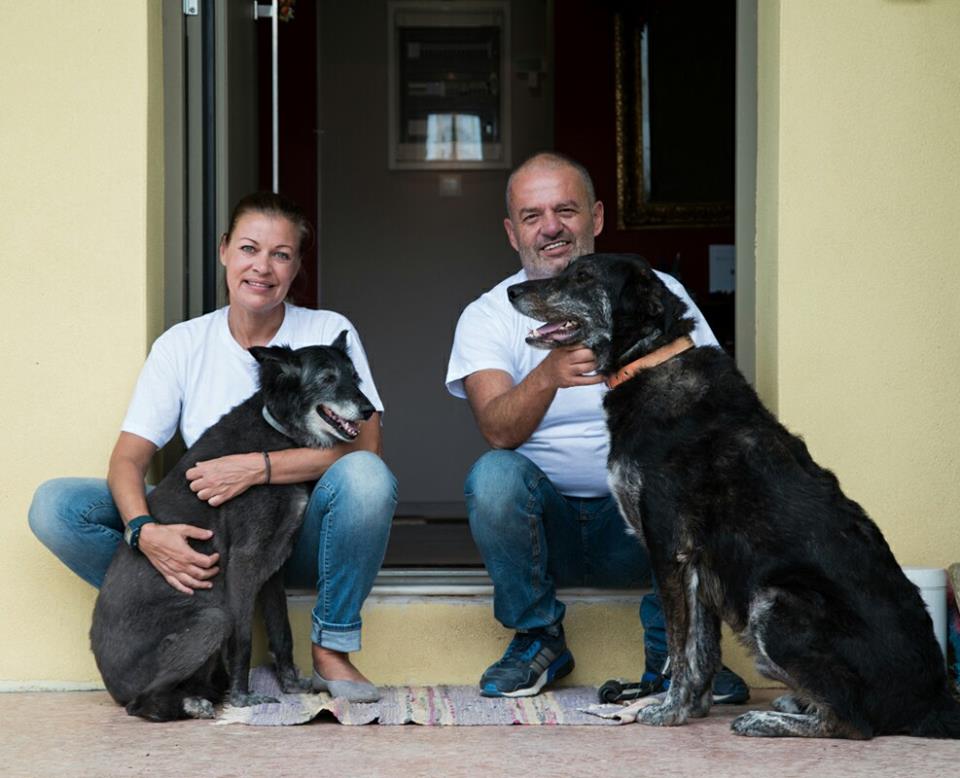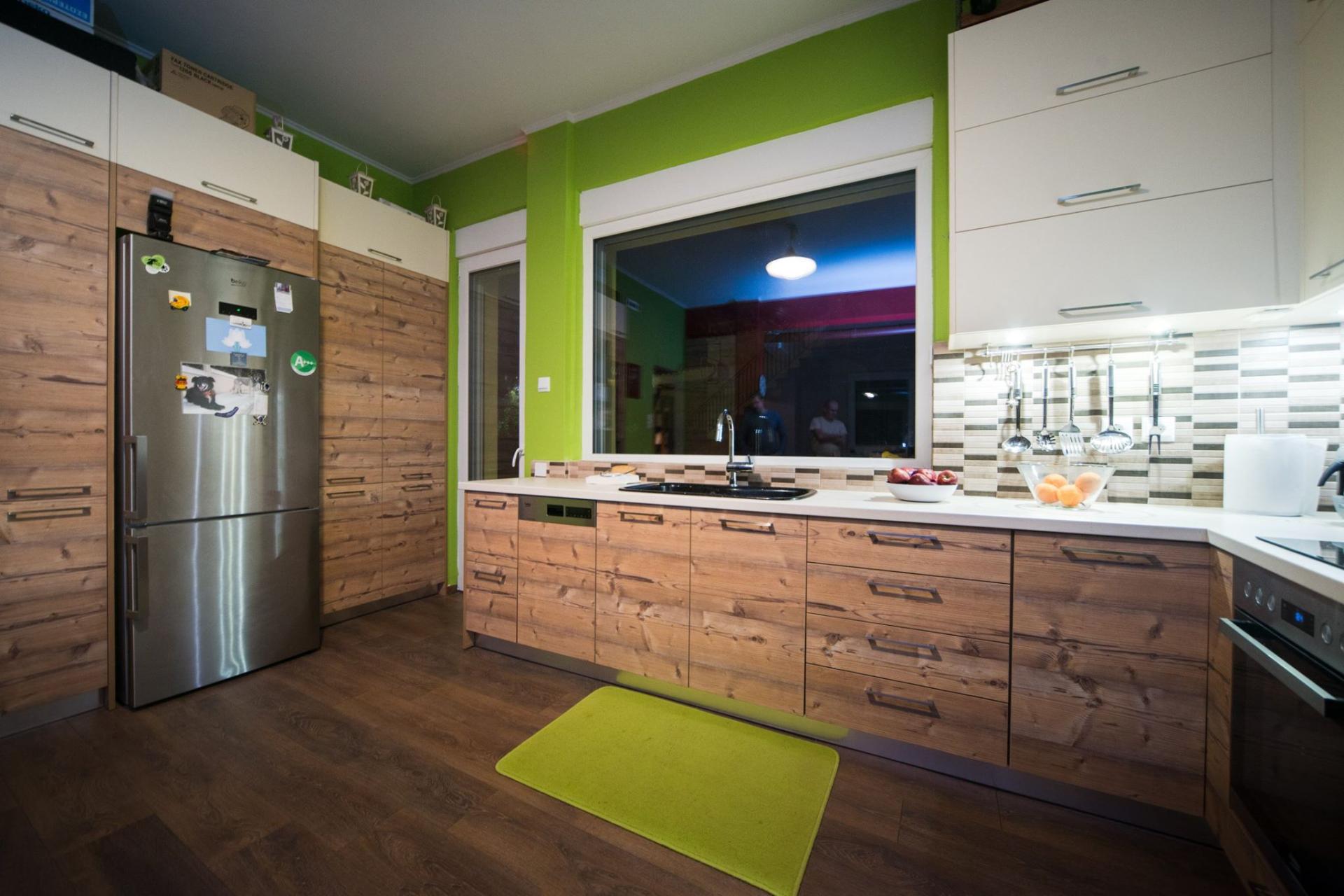Passivistas:TheHouseProject
Basic information
Project Title
Full project title
Category
Project Description
In 2014, in the midst of a severe economic recession, the Passivistas team and partners embarked on an
ambitious project to demonstrate that renovating buildings to a nearly zero-energy building standard (nZEB)
was technically and financially feasible in Greece. Indeed, the team surpassed this goal, with the deep
renovation of a 1960’s two-story detached residential building in Athens’ suburb Papagos, achieving a building
that produces more energy than it consumes.
Project Region
EU Programme or fund
Description of the project
Summary
In 2014, in the midst of a severe economic recession, the Passivistas team and partners embarked on an ambitious project to demonstrate that renovating buildings to a nearly zero-energy building standard (nZEB) was technically and financially feasible in Greece. Indeed, the team surpassed this goal, with the deep renovation of a 1960’s two-story detached residential building in Athens’ suburb Papagos, achieving a building that produces more energy than it consumes. Passivistas:TheHouseProject demonstrates that even in economically difficult times – retrofitting existing residential buildings so that they generate
more energy than they consume is both financially and technically feasible in Greece.
Bringing together a team of experts and finding support from private sector partners as well as via crowdfunding, renovation works were carried out in 2015 and 2016, using materials and technologies available on the market. The cost for transforming the 125m² two-level structure into a positive energy building will be amortised in under seven years by energy savings.
The Passivistas team has made a great contribution to raising awareness and building capacities for PEBs, with over 2,000 visitors taking part in open
house events and seminars. Whilst the project already has great replication potential in Greece and beyond, scaling up the energy efficient renovation of
residential buildings in the country could be catalyzed further by tailored financial solutions, more ambitious regulations and incentivisation schemes.
The building was certified as meeting the Passive House Institute’s EnerPHit Plus standard, it was the first of its kind in the mediterannean area, and has received international attention at the 20th International Passive House Conference in Darmstadt, Germany, and was awarded in the Geek Energy Mastering Awards 2015 for best energy-saving practice
Key objectives for sustainability
Passivistas’ principle focus was to demonstrate that the passive house approach to building retrofits is feasible in Greece. For cost as well as supply-driven reasons less attention was placed on sustainable construction materials. Nevertheless, the positive environmental impacts are clearly evident: Whilst the former owner of the Passivistas property used up to 3,5 tons of oil per winter season, the renovated building does not require a single drop of oil. Moreover, the economic dimension should also be highlighted, with yearly costs for heating of cooling the building decreasing from EUR 4,500 to zero.
Key objectives for aesthetics and quality
The 125m² flat-roofed building had not been inhabited for five years and required a complete retrofit. Reinforced concrete slabs and perforated brick walls had not been insulated and the single-glazed windows had an equally poor thermal performance. Supported by members of the Hellenic Passive House Institute and private sector partners, physical renovation began in early 2015 and the project was completed in 2016. During the renovation phase, in which energy efficiency measures were implemented and the building was split into an office space in the cellar and a residence on the ground floor, engineers, technicians as well as students and ordinary citizens were engaged in capacity building and knowledge creation activities. The residential area will continue to be open to the public and professionals for activities such as guided visits and lectures and the office space functions as the headquarters of the Hellenic Passive House Institute and is used for seminars and training events.
Key objectives for inclusion
The Passivistas project team included civil and mechanical engineers as well as architects. Further, it should be emphasised that a range of private companies and suppliers became partners or sponsors, without whose support the project could not have been realized.
The team was able to secure numerous private sector sponsors and deals with suppliers to obtain the necessary materials and technologies for work to go ahead. Through these sponsorships approximately seventy per cent of renovation costs could be covered. The project was further underpinned by a crowdfunding campaign that was launched by a German Professor from the Passivhaus Institute in Darmstadt, which generated sufficient funds to pay for a further 10 per cent of the renovation costs.
Results in relation to category
This project is a critical point on the road to the greek NZEB building of the 2020. We want to show to the people, to the engineers, to the market, to the government that consuming much less energy is achievable and cost effective. And after that, it's easy, using renewables sources, to achieve a house which has a positive energy balance that means a real sustainable house.
The way of design and step-by-step implementation, and the subsequent monitoring and metering project promotes collaborative processes among executives of HPHI, certified passive building designers, engineers and technicians from all sectors and commercial and technical department of companies manufacturing and marketing passive house components.
How Citizens benefit
Without the initiative of the Hellenic Passive House Institute, the Passivistas project would not have been conceived and implemented. Especially considering the economic situation in Greece at the time, realising the demonstration project required strong leadership as well as an equally strong team of collaborators with a shared vision. Without support from the government or university partners and with a major Greek bank backing out of collaborating, the project faced considerable head-winds. Further, the Greek government introduced capital controls in the week of renovation works beginning, hence the Passivistas team had to embrace creative approaches to ensure that the renovation could be carried out.
After completion of the project the house acts as media and collaborative process hub aimed to prove in practice the ability to upgrade the energy consumption of residential buildings in Greece and the Mediterranean area , so they do not need conventional heating or air conditioning, while drastically reducing energy costs and improve the quality of life in them.
Innovative character
Monitoring results confirm that, whilst there is an initial phase in which building technologies and consumption need to be calibrated, off the shelf technological solutions can be combined to retrofit buildings to produce more than they consume.
The Passivistas project had to overcome numerous challenges, such as limited access to funds due to capital controls, partners in the initial business plan dropping out and local technicians lacking experience in passive house construction. The project team overcame these by exploring creative financing options and bringing on board a range of private sector partners.
Whilst the current economic and regulatory climate may not be particularly favourable for scaling up NZEBs in Greece at the moment at the moment, the potential for replication Passivistas in the country and beyond remains high. The financial and environmental case for energy efficient renovations is strong and the Greece’s building stock of energy inefficient residential buildings is huge.


